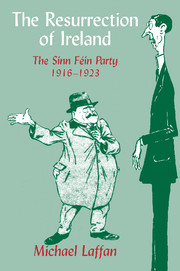Book contents
11 - Irish republicans: fundamentalists and compromisers
Published online by Cambridge University Press: 05 March 2012
Summary
The election of June 1922 confirmed what all sides had known for the previous six months: a large majority of the Irish people favoured the treaty. Most of those electors who had never sympathized with Sinn Féin probably supported the ‘third party’ candidates, who gained 39.7 per cent of the first preference votes. (This group also included disillusioned separatists who were dismayed by the drift towards civil war.) It is correspondingly likely that the bulk of those who voted for Sinn Féin candidates were former members or supporters of the party. The ‘panel’ vote split 64.4 to 35.6 per cent in favour of the treaty. Collins's faction thus had a strong claim to be the principal heir of the old united Sinn Féin. His successors disowned the party's name, but they could still assert rights of inheritance. Whether they liked it or not (and some did not), ‘treatyites’ were prominent among the descendants of the Easter rebels and the post-rising Sinn Féin.
The new government ruled in a more rational and modern way than the British had done, and it began implementing traditional separatist, Sinn Féin policies – as in its encouragement and imposition of the Irish language. Over the next few years Cumann na nGaedheal was able to convince most of the Free State's population that in some respects (although certainly not in others) a revolution had occurred.
- Type
- Chapter
- Information
- The Resurrection of IrelandThe Sinn Féin Party, 1916–1923, pp. 433 - 465Publisher: Cambridge University PressPrint publication year: 1999

